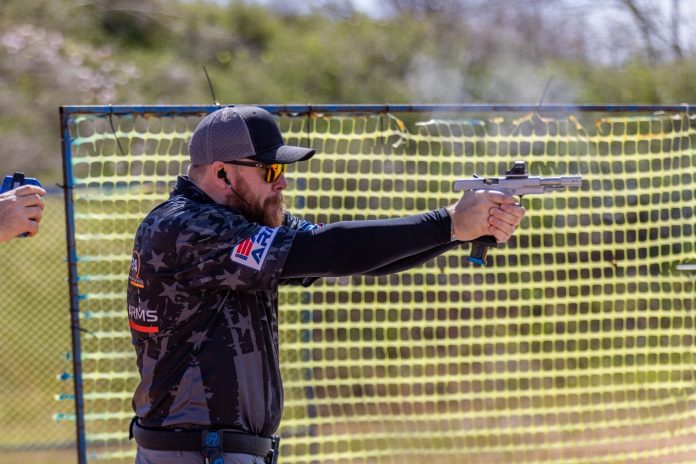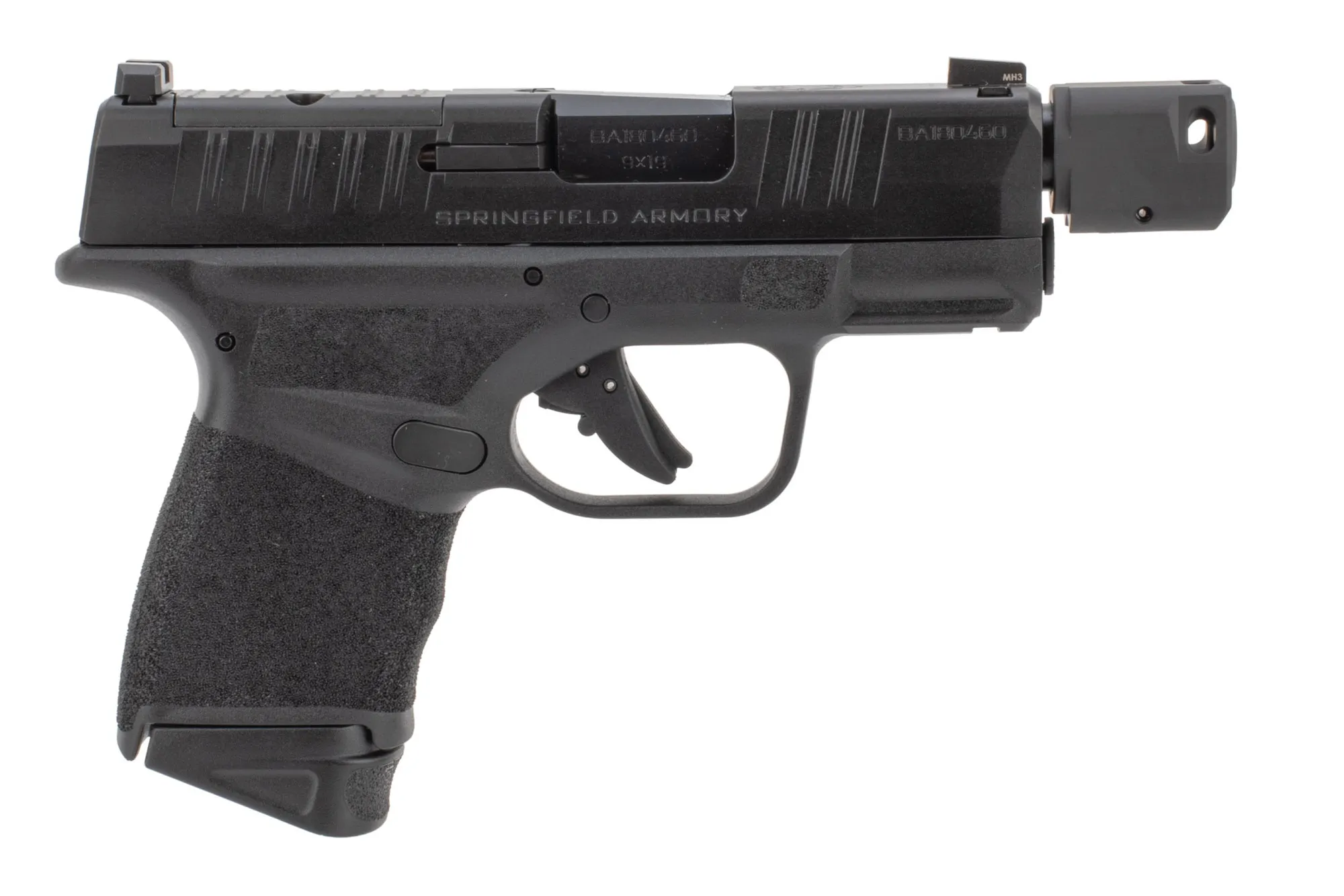
Just a few short years ago, pistol compensators were niche accessories relegated to the upper echelons of shooting competitions. You’d find them on race guns, usually alongside a massive magazine and a fixed red dot. They made sense there; to make Major power factor, you’d need a fairly hot round. Compensators could be carefully tuned with recoil springs and custom loads to create a platform that recoiled softly but still hit hard enough to get you out of Minor.
Then came the Roland Special—overnight, it seemed like every “tactical” pistol out there got a light, a red dot, and a comp. But with tactical and duty handguns these days being overwhelmingly chambered in 9mm, is there really any need for a compensator?
The Upside
To answer that, we need to first assess the actual uses and benefits of a good compensator. Their primary function is to reduce muzzle flip and/or recoil, depending on the design. Really, if a muzzle device is using side ports to reduce recoil, it ought to be considered a muzzle brake or hybrid device, but these days most any pistol muzzle device that helps you shoot flatter and faster tends to get labeled a compensator.
Compensators achieve this by redirecting the gas created by the gunshot to counteract the recoil and muzzle rise. The most common types use one or more top ports to put downward pressure on the muzzle, reducing rise. The benefits are obvious; less rise means faster recovery of your sights, faster reacquisition of your target, and overall faster shooting.

Comps offer some other fringe benefits as well, though. One of the original justifications for the compensator on the Roland Special was reduced fouling on the lens of the weapon light. For concealed carriers or operators for whom a pistol is a secondary weapon unlikely to see a high round count in a single confrontation, this benefit is negligible; just clean your weapon light regularly, and you’ll be fine. Police or security forces though, for whom a pistol may be their primary or only weapon, it can massive.
You can’t shoot what you can’t see. Even just a few mags through a pistol can be enough to seriously degrade the performance of a light—at least until the lens can be cleaned. The compensator directs the gas (and fouling) upwards and away from the light, keeping it cleaner and brighter, longer.
While not true of all compensators, many of the good ones allow users to relocate their front sight from the slide to the compensator. This allows the sight to remain fairly static under recoil, rather than reciprocate with the slide, further boosting sight recovery and target acquisition. There’s a reason these “island” style sights are popular on custom competition guns; they really do offer an advantage.
The Tradeoffs
At the end of the day though, there’s a very real question of whether the juice is worth the squeeze. The recoil-reducing properties of a compensator scale with the power and gas production of the cartridge being shot. This means you’re not going to see nearly as much benefit on a 9mm as you would on a full-power .40 S&W. Moreover, a full-size 9mm pistol doesn’t have a great deal of recoil to begin with.

Similarly, with the rapidly growing popularity of red dot optics on handguns, iron sights are becoming less and less relevant. What was once the primary sighting system on every handgun is now only a backup on many. The non-reciprocating front sight offered by certain compensators becomes a lot less attractive when it’s only a backup, unlikely to ever be used.
It’s not like compensators are all upside, either. They come with some real negatives. The biggest drawback to a comp is the same as its biggest benefit; they redirect gas.
Forcing the gas to travel upward rather than straight out from the barrel reduces recoil but it also puts all that hot air right into your field of vision. When shooting at night, this can result in a distracting fireball, even with flash-suppressant powder. A flatter-shooting pistol isn’t much of a benefit if a fireball is compromising your night vision or preventing you from reacquiring your target.
Worse still, if shooting from a retention position such as a pectoral index, a compensator can send those same hot gasses directly up and into your face. The blast from a 9mm isn’t overwhelming and dealing with it is certainly something that can be mitigated with training, but it’s a liability all the same.
Last (and honestly, least) of the factors that ought to be considered is the added length of the compensator. On a tilting-barrel action like that of most modern handguns, anything coming into contact with the front of the barrel and pushing it backward can force the gun out of battery, preventing it from being fired.
Should an armed confrontation occur within arms reach, a compensator that protrudes from the front of the gun beyond the frame or the front of the weapon light can increase the risk of the firearm being forced out of battery. Again, minor, but of note.
Certain compensators are designed to attach to the rail of the pistol, which alleviates this problem, but they tend to perform poorly compared to barrel-mounted designs and can be damaging to the frame. Other designs, like Staccato’s XC pistol, utilize a compensator that is fitted flush with the front of the frame, making it no more likely to be forced out of battery than any other pistol.
The Verdict
In the end, all of these factors need to be taken into account when making the decision for your pistol. Like all gear-related decisions, the mission and objective should be the primary determinant.
A security guard working a day shift at a checkpoint doesn’t really need to worry about the effects of a fireball on his night vision; for him, the reduced recoil may be an easy advantage. An urban police officer, on the other hand, might be much more concerned with nighttime performance and the added liability at hand-to-hand ranges.
Compensators aren’t for everyone, and on 9mm pistols, they’re not going to be the difference between winning and losing a gunfight. They offer certain benefits and are a good fit for some users, but you should think carefully before adding one to your gun.



